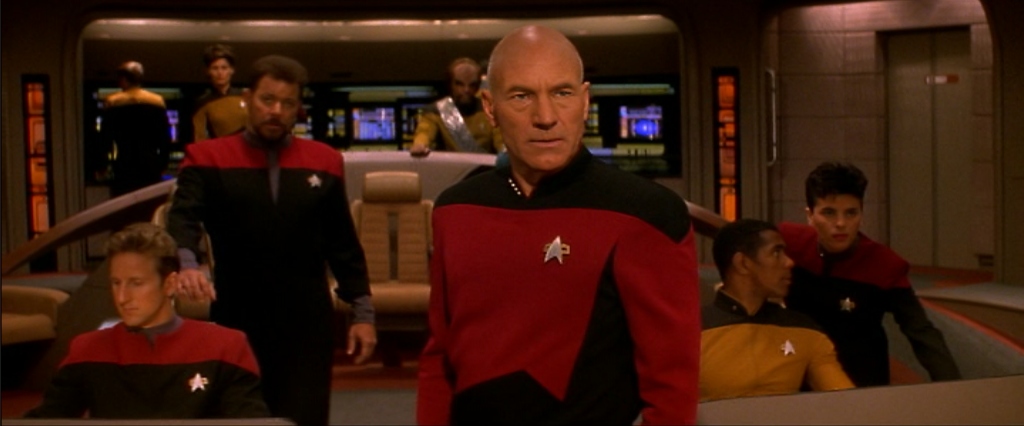As for the bridge upgrades, the main reason we got those side panels in the first place was so that they didn't have to have stations that would have to be manned every week, or in every shot - they put all the secondary stations at the back literally so that they would be paying less money for extras from the per-episode budget.
Well, also the original idea of Roddenberry and TNG's developers was that technology had advanced to the point that the ship was mostly automated and intelligent enough to run itself, and thus the crew didn't need a lot of controls -- which was why the bridge was designed to be more like a conference lounge with a few minimal consoles than a high-tech flight-control center. (And why there was no communications officer, only one flight controller instead of helm and navigation, and no regular chief engineer.) Heck, one of Andrew Probert's early design proposals would've had a conference table right in the middle, but they eventually decided to make that a separate set for variety. The movie added completely unnecessary new consoles because the director wanted the bridge to look more "busy" and visually interesting. (A design philosophy taken to its extreme by the Kelvin Timeline movies, wherein the bridge has maybe twice as many consoles as the original and it's unclear what most of them are for.)



